Scutum constellation lies in the southern sky. Its name means “the shield” in Latin. It is the fifth smallest constellation in the sky.
The constellation was originally introduced by the Polish astronomer Johannes Hevelius in the 17th century. Hevelius named it Scutum Sobiescianum, Shield of Sobieski, in honour of the Polish King Jan III Sobieski, who had been victorious in the Battle of Vienna in 1683. Hevelius created the constellation a year later to commemorate the event, and the name was eventually simplified to Scutum.
The most famous deep sky objects in Scutum are Messier 11, the Wild Duck Cluster, and the open cluster Messier 26. The constellation is also home to the famous variable star Delta Scuti and to the red supergiants Stephenson 2-18 and UY Scuti, which have both held the title of the largest star known.
Facts, location and map
Scutum is the 84th constellation in size, occupying an area of only 109 square degrees. It is located in the fourth quadrant of the southern hemisphere (SQ4) and can be seen at latitudes between +80° and -90°. The neighboring constellations are Aquila, Sagittarius and Serpens Cauda.
The constellation name Scutum is pronounced /ˈskjuːtəm/. In English, the constellation is known as the Shield. The genitive form of Scutum, used in star names, is Scuti (pronunciation: /ˈskjuːtaɪ/). The three-letter abbreviation, adopted by the International Astronomical Union (IAU) in 1922, is Sct.
Scutum does not have any stars brighter than magnitude 3.00 or located within 10 parsecs (32.6 light years) of Earth. The brightest star in the constellation is Alpha Scuti, with an apparent magnitude of 3.85. The nearest star is LHS 3398 (spectral class M1V), located at a distance of 41.54 light years from Earth. Scutum constellation has only one star with a confirmed exoplanet, COROT-17 (spectral class G2V).
The constellation does not contain any named stars.
Scutum belongs to the Hercules family of constellations, along with Aquila, Ara, Centaurus, Corona Australis, Corvus, Crater, Crux, Cygnus, Hercules, Hydra, Lupus, Lyra, Ophiuchus, Sagitta, Sextans, Serpens, Triangulum Australe and Vulpecula.
Scutum contains two Messier objects – Messier 11 (M11, NGC 6705, Wild Duck Cluster) and Messier 26 (M26, NGC 6694). There is one meteor shower associated with the constellation, the June Scutids.
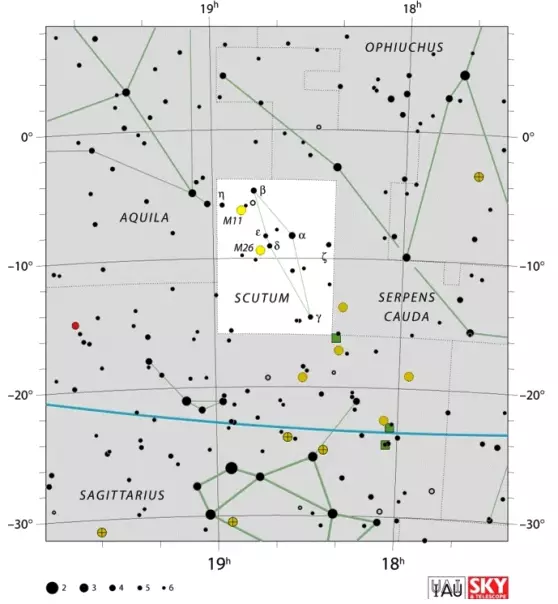
Scutum constellation map by IAU and Sky&Telescope magazine
Story
Scutum constellation is not associated with any myths. It is the only constellation associated with a non-classical historical figure, the Polish King John III Sobieski.
The Polish astronomer Johannes Hevelius, who created the constellation in 1684, named it Scutum Sobiescianum, or Shield of Sobieski, to commemorate the king’s victory in the Battle of Vienna in 1683. King John III Sobieski also helped Hevelius rebuild his observatory after a fire in 1679.
Scutum constellation first appeared charted in the scientific journal Acta Eruditorum in August 1684. Hevelius cited Robur Carolinum, a constellation introduced by the English astronomer Sir Edmond Halley in 1679 to honour King Charles II of England. Halley’s constellation was located between Crux and Carina and its name referred to the oak where King Charles II hid from Oliver Cromwell’s troops after the Battle of Worcester, the last battle of the English Civil War in 1651. Robur Carolinum later fell into disuse. The name Scutum Sobiescianum was eventually shortened to Scutum, the shield.
Major stars in Scutum
Ionnina – α Scuti (Alpha Scuti)
Alpha Scuti is the brightest star in the constellation. It is an orange giant with the stellar classification of K2III. It has an apparent magnitude of 3.85 and is approximately 174 light years distant from Earth. The star used to belong to Aquila constellation and was previously designated 1 Aquilae. It is a known variable star, with its brightness varying by about 10 percent.
Alpha Scuti is 132 times more luminous than the Sun and has a mass 1.7 times solar. It is believed to be at least 2 billion years old.
β Scuti (Beta Scuti)
Beta Scuti is the second brightest star in Scutum constellation. It has an apparent magnitude of 4.22 and is approximately 690 light years distant from the solar system. It is a yellow bright giant star with the stellar classification G5II, about 1,270 times more luminous than the Sun. The star used to be known as 6 Aquilae.
ζ Scuti (Zeta Scuti)
Zeta Scuti is a yellow giant with the stellar classification of G9 IIIb Fe-0.5. It has an apparent magnitude of 4.68 and is approximately 207 light years distant from the Sun. It is the third brightest star in the constellation.
Zeta Scuti is an astrometric binary system, a binary star that seemingly orbits around an empty space, without a visible or detectable companion. The star has an orbital period of 6.5 years.
γ Scuti (Gamma Scuti)
Gamma Scuti is a white subgiant star belonging to the stellar class A1IV/V. It has an apparent magnitude of 4.67 and is located about 291 light years from Earth. It is the fourth brightest star in the constellation.
δ Scuti (Delta Scuti)
Delta Scuti is a well-known variable star in Scutum, one that serves as a prototype for an entire class of variables, the Delta Scuti variables, sometimes also known as dwarf Cepheids. These are variable stars that exhibit fluctuations in luminosity as a result of both radial and non-radial pulsations of their surfaces.
Delta Scuti has the stellar classification of F2 IIIp. It is a yellow-white giant star with a mass 2.23 times that of the Sun. It has two line-of-sight companions, one with a visual magnitude of 12.2 located 15.2 arc seconds away, and another with a magnitude of 9.2, 53 arc seconds away.
Delta Scuti has an apparent magnitude of 4.72 and is approximately 202 light years distant from the solar system. It has a 0.19377 day period of variability and its brightness varies by 0.2 magnitudes. The star really has a multiple pulsation period, the main one being 4.65 hours and the secondary 4.48 hours, with added periods of 2.79, 2.28, 2.89, and 20.11 hours.
η Scuti (Eta Scuti)
Eta Scuti is an orange giant belonging to the spectral class K1III. It has an apparent magnitude of 4.83 and is approximately 207 light years distant. The star has 1.4 times the solar mass and more than 10 times the solar radius. Its estimated age is around 2.8 billion years.
ε Scuti (Epsilon Scuti)
Epsilon Scuti is a multiple star system. It has an apparent magnitude of 4.88 and is approximately 523 light years distant from Earth. The system has the stellar classification of G8II, matching the spectrum of a yellow bright giant.
The primary component in the system is a class G bright giant. The star has at least three companions: two magnitude 14 stars at a separation of 13.6 and 15.4 seconds of arc, and a 13th magnitude star separated by 38 arc seconds.
R Scuti
R Scuti is a yellow supergiant star classified as an RV Tauri variable. RV Tauri variables are luminous pulsating variable stars with distinctive light variations, and fluctuations in luminosity occurring as a result of radial pulsations of the stars’ surfaces. R Scuti is the brightest RV Tauri variable known. It has an apparent magnitude ranging from 4.2 to 8.6 and is approximately 1,400 light years distant from the Sun.
R Scuti was discovered by the English astronomer Edward Pigott in 1795. The star has 87.4 times the Sun’s radius and is 9,400 times more luminous. When at its brightest, it can be seen without binoculars. It is located about a degree to the northwest of Messier 11 (the Wild Duck Cluster).
PSR B1829-10
PSR B1829-10 is a pulsar, a magnetized rotating neutron star emitting a beam of electromagnetic radiation. It has an apparent magnitude of 5.28 and is approximately 30,000 light years distant from the solar system. It has a mass 1.4 times that of the Sun.
Deep sky objects in Scutum
Wild Duck Cluster – Messier 11 (M11, NGC 6705)
The Wild Duck Cluster was discovered by the German astronomer Gottfried Kirch in 1681, and included in Messier’s catalogue in 1764. It is an open cluster with an apparent magnitude of 6.3. It is one of the richest, most compact open clusters known. M11 contains about 2,900 stars. The brightest stars in the cluster form a triangle which could represent a flock of wild ducks.
The Wild Duck Cluster is approximately 6,200 light years distant from the Sun. It is believed to be about 220 million years old.
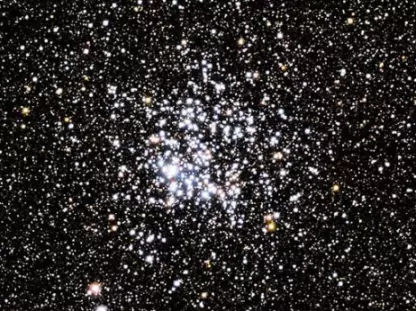
The open cluster Messier 11 – Many stars like our Sun were formed in open clusters. The above pictured open cluster, M11, contains thousands of stars and is just over five thousand light years distant. The stars in this cluster all formed together about 250 million years ago. The bright young stars in M11 appear blue. Open clusters, also called galactic clusters, contain fewer and younger stars than globular clusters. Also unlike globular clusters, open clusters are generally confined to the plane of our Galaxy. M11 is visible with binoculars towards the constellation of Scutum. Image: NASA
Messier 26 (M26, NGC 6694)
Messier 26 is another open cluster in Scutum. It has an apparent magnitude of 8.0 and is approximately 5,000 light years distant from Earth. The cluster was discovered by Charles Messier in 1764, and subsequently included in his catalogue.
M26 is about 22 light years across and believed to be about 89 million years old. The brightest star in the cluster has an apparent magnitude of 11.9. There is a region of low star density near the cluster’s core, possibly caused by an obscuring cloud of interstellar matter between the cluster and us.
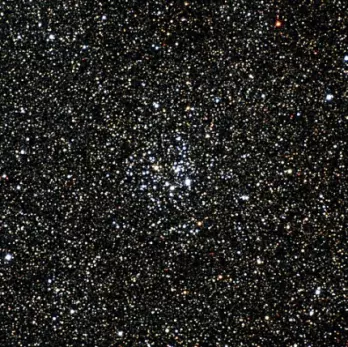
Messier 26, image: Hillary Mathis, Vanessa Harvey, REU program/NOIRLab/NSF/AURA
NGC 6712
NGC 6712 is a globular cluster in Scutum. It has a visual magnitude of 8.69 and is about 22,500 light years distant from the solar system. The cluster was probably discovered by the French astronomer Le Gentil in July 1749. Le Gentil described the objects as a “true nebula.”
NGC 6712 was later independently discovered by the German-British astronomer William Herschel on June 16, 1784. Herschel classified the cluster as a round nebula. It was John Herschel who was the first to describe the object as a globular star cluster in the 1830s.
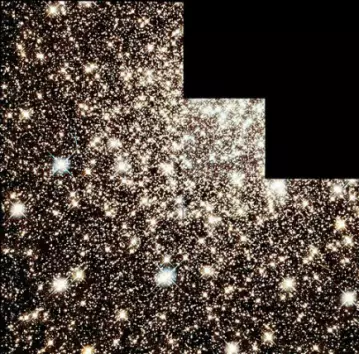
NGC 6712, image: NASA/ESA – The Hubble Legacy Archive (HLA): Space Telescope Science Institute (STScI), the Space Telescope European Coordinating Facility (ST-ECF), and the Canadian Astronomy Data Centre (CADC)
IC 1295
IC 1295 is a planetary nebula in Scutum constellation. It has an apparent magnitude of 12.7 and is about 3,300 light years distant from Earth. The central star is a white dwarf currently in the process of shedding its outer layers.
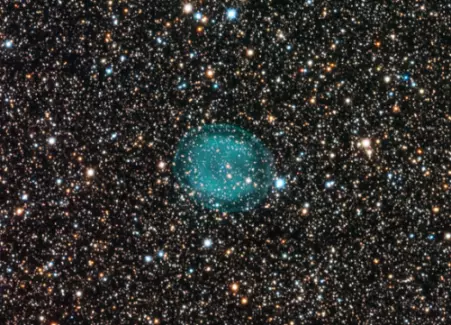
IC 1295, image: Adam Block/Mount Lemmon SkyCenter/University of Arizona (CC BY-SA 4.0)
RSGC1
RSGC1 is an open cluster in the Milky Way Galaxy, approximately 22,000 light years away in the direction of Scutum constellation. It is a young, massive star cluster with 12 red supergiant stars, one yellow hypergiant, and one intermediate.
The cluster cannot be seen in visible light; it was discovered in 2006 using data from several infrared surveys. It is believed to be 10-14 million years old, and is one of the most massive known clusters in our galaxy.
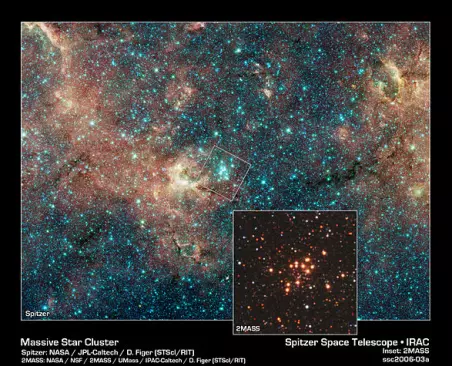
The sky is a jewelry box full of sparkling stars in these infrared images. The crown jewels are 14 massive stars on the verge of going out as supernovae. These hefty stars reside in one of the most massive star clusters in the Milky Way Galaxy. The bluish cluster is inside the white box in the large image, which shows the star-studded region around it. A close-up of the cluster can be seen in the inset photo. These large stars are a tip-off to the mass of the young cluster. Astronomers estimate that the cluster is at least 20,000 times as massive as the Sun. Each red supergiant is about 20 times the Sun’s mass. The larger color-composite image was taken by the Spitzer Space Telescope for the Galactic Legacy Infrared Mid-Plane Survey Extraordinaire (GLIMPSE) Legacy project. The survey penetrates obscuring dust along the thick disk of our galaxy to reveal never-before-seen stars and star clusters. The false colors in the image correspond to infrared-light emission. The stars in the large color-composite image all appear blue because they emit most of their infrared light at shorter wavelengths. The inset image, a false-color composite, was captured by the Two Micron All Sky Survey (2MASS). Astronomers identified the cluster as a potential behemoth after spotting it in the 2MASS catalogue. They then used the Infrared Multi-object Spectrograph at the Kitt Peak National Observatory in Arizona to analyze the cluster’s colors. From that analysis, they discovered the red supergiants. They confirmed the red supergiants’ pedigree by studying the colors of other red supergiants in data taken by the Spitzer Space Telescope. The cluster lies 18,900 light-years away in the direction of the constellation Scutum. It is the first in a survey of 130 potentially massive star clusters in the Milky Way that astronomers will study over the next five years using a variety of telescopes, including the Spitzer and Hubble space telescopes. Image: NASA, JPL-Caltech, D. Figer (STScI, RIT)
Alicante 8 – RSGC4
Alicante 8 is another young massive open cluster in Scutum, also one of the most massive open clusters known in the Milky Way. Like the nearby RSGC1, the cluster cannot be observed in visible light. It was first discovered in 2010. The cluster contains 8 to 13 red supergiant stars.
Alicante 8 is approximately 20,000 light years distant from Earth. Its estimated age is about 16-20 million years.
RSGC3
RSGC3 is also a massive young open cluster that cannot be detected in visible light. It was discovered in 2010. The cluster contains 8 to 14 red supergiant stars. It is approximately 22,000 light years distant from Earth.
At least 30 more red supergiants have been detected in the vicinity of the cluster, seven of which form the cluster Alicante 7.
Stephenson 2 – RSGC2
Stephenson 2 is yet another young open cluster in Scutum that cannot be observed in visible light. It is about 20,000 light years distant. It is home to Stephenson 2-18, one of the largest stars known.
The cluster was discovered in 1990 using data obtained in an infrared survey. It is known to contain 26 red supergiants. The cluster is believed to be 14-20 million years old.
Mercer 3
Mercer 3 is a globular cluster in Scutum. It is heavily obscured as it is embedded in the disk of the Milky Way. The cluster is about 12 billion years old. It was discovered in an infrared survey in 2008.